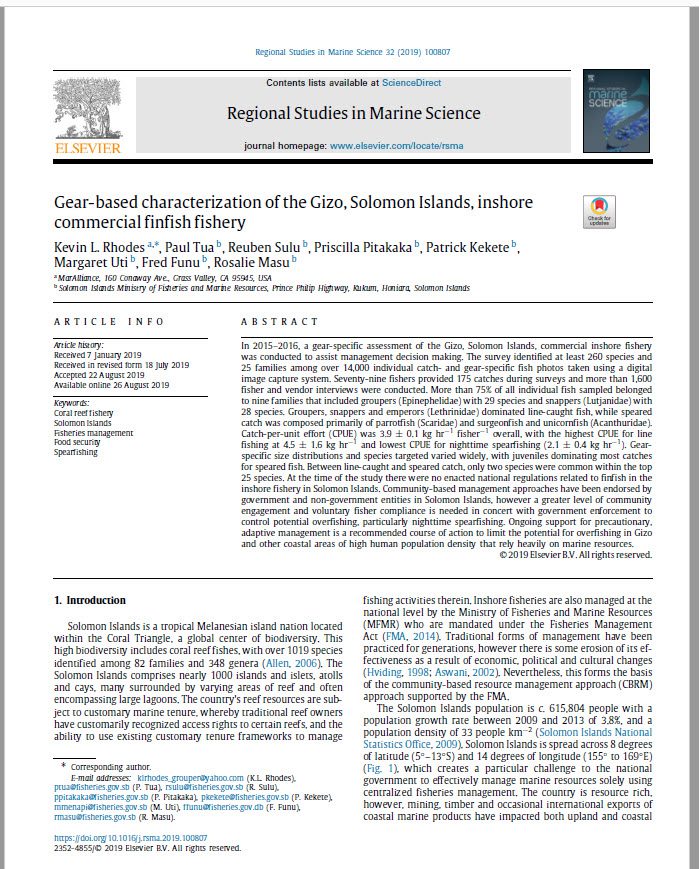In 2015–2016, a gear-specific assessment of the Gizo, Solomon Islands, commercial inshore fishery was conducted to assist management decision making. The survey identified at least 260 species and 25 families among over 14,000 individual catch- and gear-specific fish photos taken using a digital image capture system. Seventy-nine fishers provided 175 catches during surveys and more than 1,600 fisher and vendor interviews were conducted. More than 75% of all individual fish sampled belonged to nine families that included groupers (Epinephelidae) with 29 species and snappers (Lutjanidae) with 28 species. Groupers, snappers and emperors (Lethrinidae) dominated line-caught fish, while speared catch was composed primarily of parrotfish (Scaridae) and surgeonfish and unicornfish (Acanthuridae). Catch-per-unit effort (CPUE) was 3.9 0.1 kg hr−1 fisher−1 overall, with the highest CPUE for line fishing at 4.5 1.6 kg hr−1 and lowest CPUE for nighttime spearfishing (2.1 0.4 kg hr−1). Gear- specific size distributions and species targeted varied widely, with juveniles dominating most catches for speared fish. Between line-caught and speared catch, only two species were common within the top 25 species. At the time of the study there were no enacted national regulations related to finfish in the inshore fishery in Solomon Islands. Community-based management approaches have been endorsed by government and non-government entities in Solomon Islands, however a greater level of community engagement and voluntary fisher compliance is needed in concert with government enforcement to control potential overfishing, particularly nighttime spearfishing. Ongoing support for precautionary, adaptive management is a recommended course of action to limit the potential for overfishing in Gizo and other coastal areas of high human population density that rely heavily on marine resources.
Kevin L. Rhodes, Paul Tua, Reuben Sulu, Priscilla Pitakaka, Patrick Kekete, Margaret Uti, Fred Funu, Rosalie Masu

